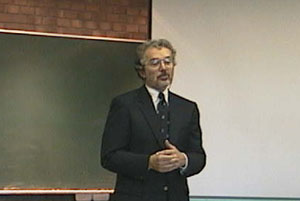Japanese
Higher Education Reform in Austria
By: Prof. Karl Heinz Gruber (Universitat Wien)
Seminar Room, Nagoya University Library
Nov 10, 1998

Summary
Austria's 18 universities are undergoing a period of far-reaching reform and change.
1)The rapid expansion ("massification") of the last 25 years has quadrupled the student population from 51,000 in the year 1970
to 217,000 in the year 1998. All Austrian universities are state institutions and study is free of any charge
2) Later than in most other European countries the diversification of higher education has begun in 1994: the new "Fachhochschul-sector" by the year 2000 will offer 10,000 students courses of study which are shorter and closer linked to industry, commerce and information technology.
3) Major legislative change in 1993 has made universities more autonomous in personnel and financial matters.
4) A new quality awareness has introduced peer reviews of the research activities of university departments. All lectures and seminars must be regularly assessed by students at the end of each semest
5) The so-called "Sorbonne Declaration" of the four biggest member countries of the European Union will force smaller countries like Austria to harmonize their degree structures and course length. Basically it will mean the introduction of a Bachelor degree as a first degree.
6) Finally, the "White Paper" of the Austrian higher education minister of May 1998 requires of all university institutes to argue and justify their existence, their structure and their efficiency, it is expected that this "rationalization exercise" will lead to the merger and to the closure of some institutes.
References
Federal Minister of Science and Transport, White Paper on Higher Educaiton in Austria, Vienna, 1998.
Federal Minister of Science and Transport, The Austrian University System, Vienna, 1998.

|




